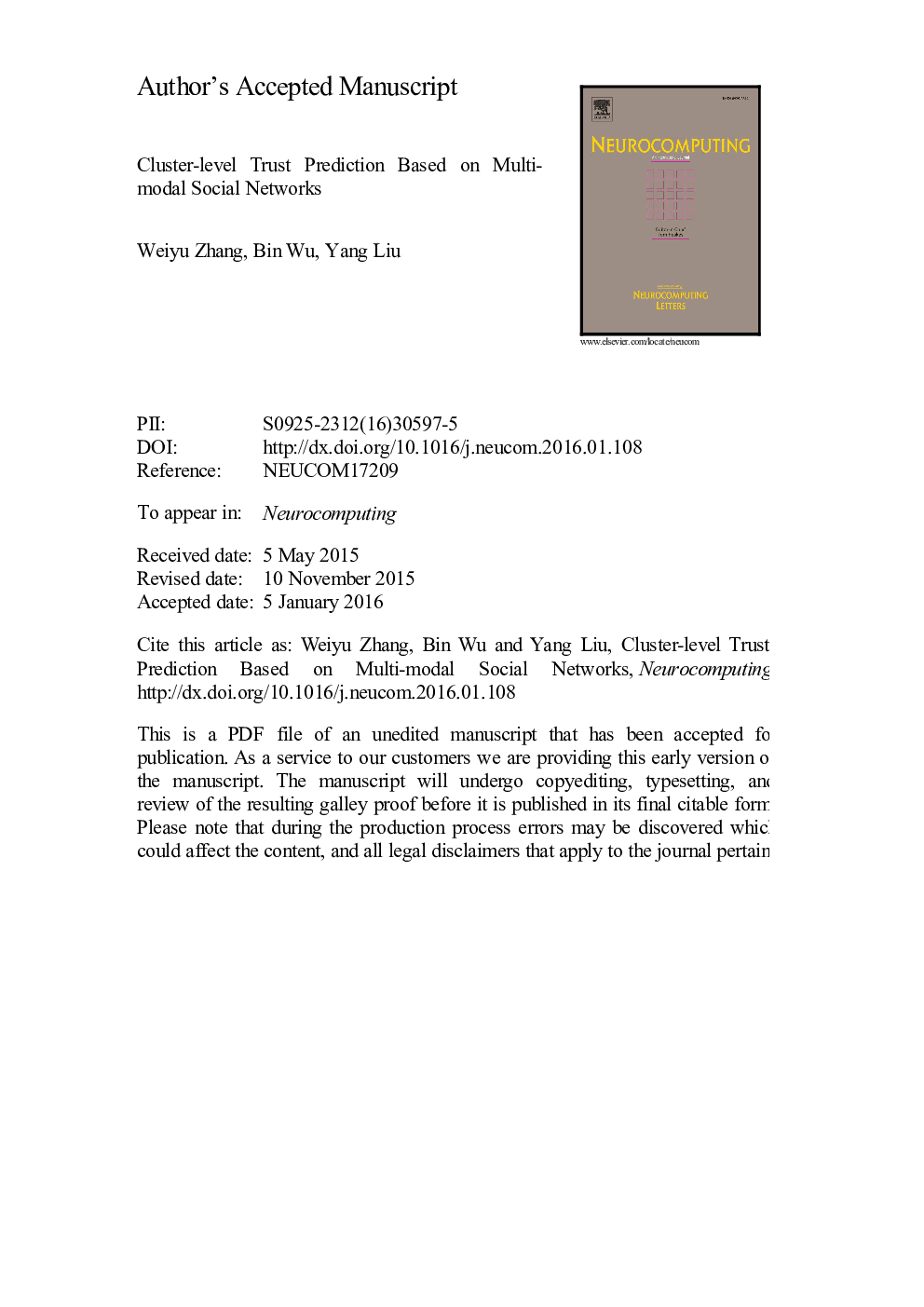| Article ID | Journal | Published Year | Pages | File Type |
|---|---|---|---|---|
| 4948544 | Neurocomputing | 2016 | 27 Pages |
Abstract
Trust relation is an important connection in many online social services, and it can help online users seek reliable information. To improve trust prediction performance and alleviate the sparsity of explicit trust graph, we aggregate heterogeneous networks from both an explicit trust graph and a rating graph and exploit the effect of cluster-level trust prediction. In this paper, we propose a framework incorporating co-clustering users and item methods and aggregating of multi-model similarity of users. We first co-cluster users and items to obtain several meaningful user-item subgroups. In these subgroups, user preference on items subset is more accurate and consistent. Then, in each subgroup, we separately calculate explicit and implicit similarities between two users. Explicit similarity is achieved through Katz method based on the explicit trust graph; however, implicit similarity is calculated by our proposed method based on the rating graph. Moreover, we combine explicit and implicit similarities using a linear combination method. User pairs may belong to one or more subgroups. Therefore, we merge all aggregated similarity from all belonging subgroups to achieve trust prediction. Experimental results on three real-world datasets show that proposed framework can obtain a significant improvement in terms of prediction accuracy criteria over representative approaches.
Keywords
Related Topics
Physical Sciences and Engineering
Computer Science
Artificial Intelligence
Authors
Weiyu Zhang, Bin Wu, Yang Liu,
